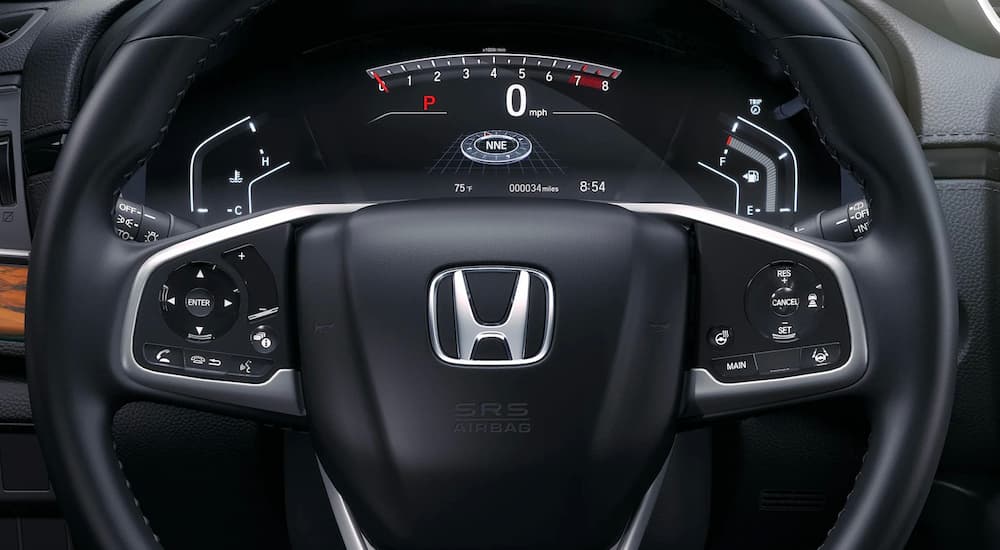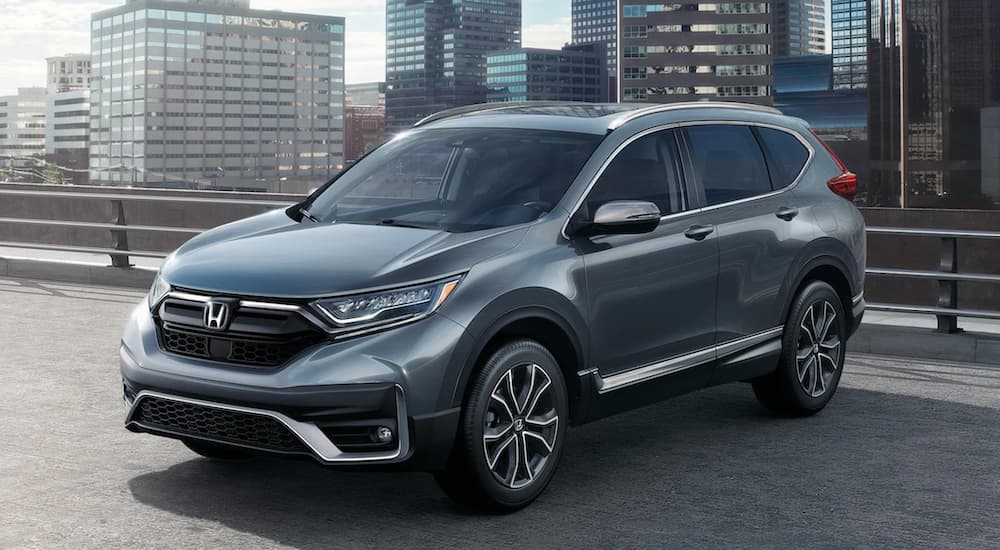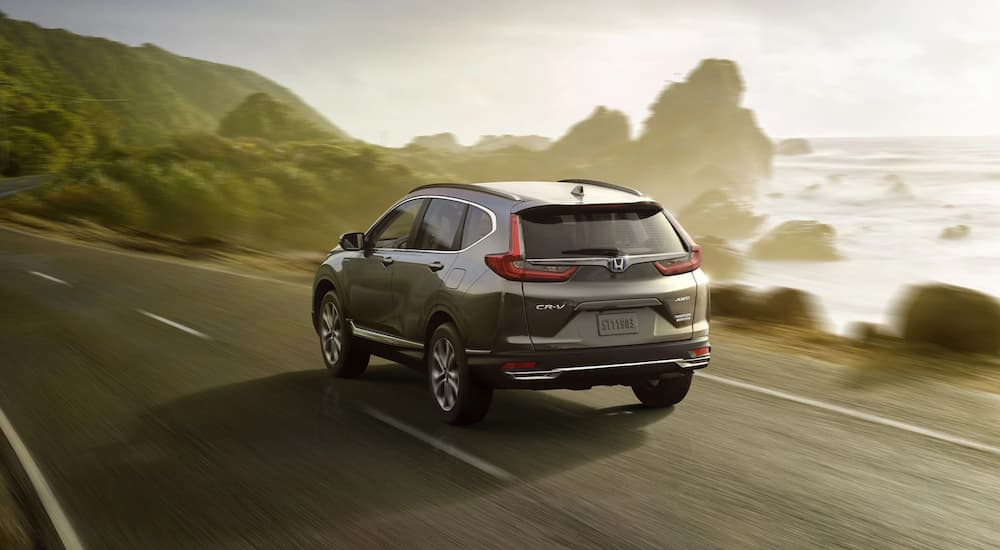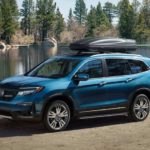Let me ask you a question. What is the single most important part about driving to a destination? Getting there safe and sound, and of course, preferably alive. From the outside, vehicles may not look that different from a safety perspective than they did ten years ago. However, the proliferation of advanced driver-assist features like Honda Sensing has made modern vehicles like the 2022 Honda CR-V far safer than ever before.
We now live in a day and age where the safety of a vehicle is not only measured by the strength of its frame and number of airbags but also by the integrated safety features that are becoming more commonplace each year. Not only has Honda been achieving fantastic results with the first part of this equation, but Honda Sensing is the second piece. We’ve been seeing it pop up time and time again across Honda’s lineup, and the CR-V has been coming with this safety suite standard since 2017. This year’s model is no exception. What features can you expect with the Honda Sensing safety suite? Let’s first start by discussing the safety features that you can expect to find with your new Honda.
Collision Mitigation Braking System
With the 2022 Honda CR-V comes a Collision Mitigation Braking System, which is commonly abbreviated as CMBS. Whereas many other manufacturers include a warning and subsequent auto braking as two separate features, Honda combines the two. The first function of the CMBS is to warn the driver if a collision is imminent. In those times of emergency that are completely unexpected, such as a driver ahead of you applying their brakes too early, the system will recognize these events. Firstly, a warning is signaled to the driver, and this is done in a couple of ways. There’s a beeping sound that will signal the driver to gain their attention, and the seat may pulsate and rumble for a more direct way of getting your attention.
Once you hear the beep, it goes without saying that you should apply the brakes. However, what if you can’t apply them in time? This is where the CMBS’ second function comes into play, and this is an automatic braking function that can occasionally prevent an accident altogether. Let’s say that the driver can’t hit the brakes fast enough for one reason or another. In that case, the brakes will be automatically applied to bring the vehicle to a stop as quickly as possible. Of course, a vehicle going at a tremendous speed takes longer to slow down; that’s just the science of it. Because of this, the Honda CR-V owner’s manual states that this will only activate if your vehicle is traveling below 62 mph. So, if you’re trying to get up to 88 mph to go back in time, just be careful because the CMBS won’t activate.

Adaptive Cruise Control
There’s Cruise Control, and then there’s Adaptive Cruise Control. The difference? Nearly everything. You know when you’re on the freeway and activate cruise control, your vehicle remains at your preset speed until you’ve applied the brakes? Right, so that’s not how Adaptive Cruise Control works. The only real similarity is once you activate the feature.
To begin, bring your vehicle up to a speed that you’d like to stick to and enable cruise control; that part remains as simple as ever. However, let’s say that your vehicle is traveling faster than one that’s ahead of yours, and you’re worried that you’re going too fast. Adaptive Cruise Control will intelligently sync your speed and apply the brakes to follow that other driver safely. Once the road is clear again, your vehicle will remember that preset speed that you had put in place and return to it.
Road Departure Mitigation System
Traveling on the highway isn’t easy for everyone, and sometimes it makes drivers quite nervous to turn onto the freeway. What if there were a few safety features to give you an extra helping hand and an extra pair of eyes on the road? Luckily with the Honda Sensing safety suite, this is exactly what you’ll get. The first feature that assists with this is the Road Departure Mitigation System. While you may argue that you’ve been successfully driving on the freeway just fine up until now, this system’s usefulness can’t be understated.
For one reason or another, if your vehicle is slowly deviating from a lane without the use of a blinker, then this feature will kick in. According to Honda, the main function of this feature is to alert the driver if they’re not keeping straight in their lane, whether it’s veering slightly off the road altogether or the lane that’s on your side. Although a rumble strip is designed to slow you down, and it most certainly gains your attention, the Road Departure Mitigation System will apply in areas that are void of these too.
Lane Keeping Assist System
The reason why we listed the Road Departure Mitigation System before this is because both it and the associated Lane Keeping Assist System work closely together. What is a Lane Keeping Assist System? As its name would suggest, it’s a system that’s designed to keep you in your lane. To reference back to the previous feature we’ve mentioned, if the alert that it provides doesn’t capture the attention of the driver, the vehicle will slowly begin assisting you in aligning with the lane that should be within. This can avoid a plethora of issues on the freeway. Most importantly, it avoids contact with any other vehicle as crossing lanes without a signal can lead to a devastating and potentially deadly collision. Of course, any licensed driver knows to keep their vehicle aligned in an intended lane, but accidents aren’t impossible. Even if you’re confident that this feature won’t apply to you, let me remind you of an age-old saying. “It’s better to have it and not need it than to need it and not have it.
Safety First, Second, and Third
If there’s one thing that the 2022 Honda CR-V shares with its contemporaries within Honda’s lineup, it’s the brilliance of its safety. When Honda announced the Honda Sensing safety suite was being made standard in the CR-V and other models, it felt like a breath of fresh air for many drivers who are usually restricted to the base models of their preferred vehicle. Nowadays, saving money doesn’t save the manufacturer the need to omit such features, and a lot of this has to do with competition.
In a time where multiple manufacturers are designing safety suites for their vehicles, Honda showed up relatively early to the party, which is a perfect representation of their dedication to safety. Asking any Honda owner why they chose Honda over any other manufacturer, and it’s not uncommon to hear safety and reliability as their answer. We get it; this year is arguably harder than any other when it comes to new vehicle shopping because of the sheer variety that is on the market today. However, if you’re going to buy a new vehicle this year, we believe that finding a model with Honda Sensing is worth it for the added peace of mind.





